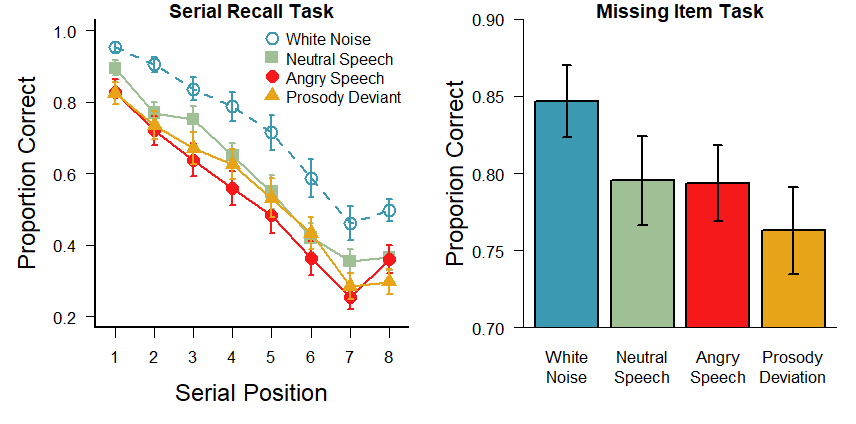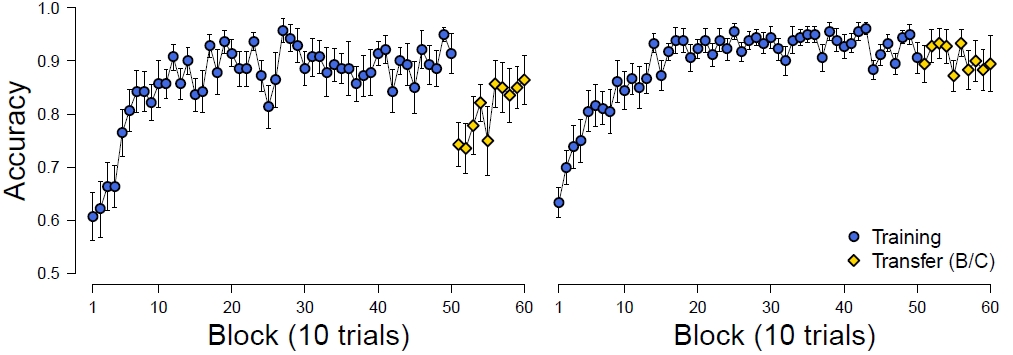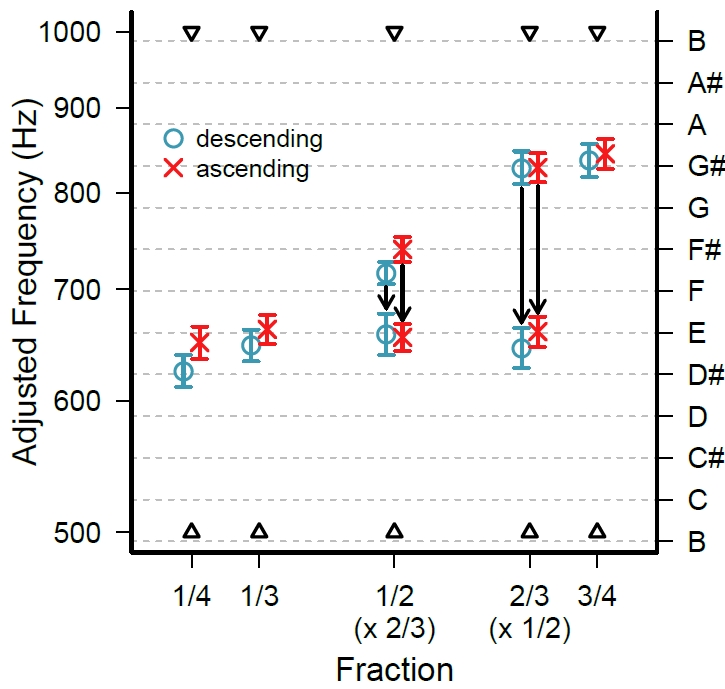Research
Auditory Cognition
In the field of auditory cognition, I am interested in how humans process sound that is irrelevant to an individual’s current goals, and how this depends on the individual’s sensory and cognitive processing abilities (e.g., working memory capacity or auditory selective attention). I am also studying the effects of psychoacoustics (e.g., loudness, fluctuation strength), speech-related properties (e.g., semantics, syntax, prosodic cues), and subjective evaluations (e.g., liking, annoyance, unpleasantness) on the disruption of performance in a focal cognitive task. Using the classical “irrelevant sound paradigm”, I am investigating the disruptive effects of (acoustically manipulated) background speech on the short-term memorization of visually presented information, but I am also interested in auditory distraction in other cognitive tasks (e.g., mental arithmetics; Kattner et al., 2022, M&C). Regardless of the exact task, I am particularly interested in the mechanisms by which certain properties of the sound (e.g., phonological integrity, emotional prosody, intelligibility) interfere with specific processes that are demanded by the focal task (e.g., verbal processing, serial rehearsal). With regard to emotional prosody, we found that certain intonations (angry speech, indicated by the red line in the left panel of the figure below) produce enhanced disruption of serial short-term memory (compared to neutral speech; see left panel of the figure below), whereas no such effect was observed in a task that does not require serial-order processing (green vs. red bar in the right panel below; Kattner & Ellermeier, 2018, JEP:HPP). In contrast, a single prosody deviation (a shift from neutral to angry speech in only one word) was found produce some disruption in both the serial and the non-serial short-term memory task (see orange bar in the right panel below).

In addition, I am studying whether auditory distraction can be reduced through enhanced auditory selective attention or cognitive control. In this line of research, we were able to demonstrate that the disruptive effect of irrelevant speech on verbal short-term memory can be eliminated or attenuated in (a) blind listeners (Kattner & Ellermeier, 2014a, QJEP) as well as (b) sighted individuals whose auditory selective attention had been trained (Kattner & Ellermeier, 2020, JEP:HPP). We recently observed similar reductions of the task-specific interference of changing-state sound with serial rehearsal in blind individuals, but not in visually-impaired, suggesting that profound visual deprivation may be necessary to develop an efficient auditory or attentional shield against irrelevant sound (Kattner et al., 2023, JCP). In a current series of experiments, we are also studying the role of foreknowledge and metacognitive monitoring of auditory distractors (e.g., Kattner & Bryce, 2022, JEP:HPP; Kattner et al., 2022, APC).
More recently, I have been studying the influence of auditory distractors on attention in dual-task situations. Specifically, using an auditory search task in the “psychological refractory period” paradigm, we were able to show that auditory and central attention do not depend on the same central capacity limitations (Kattner & Reimer, 2020, QJEP).
Learning and Transfer
In the field of learning, I am interested in the degree of transfer to novel settings (e.g., new tasks or stimuli), that can be observed after extensive perceptual or associative learning, both in terms of immediate improvement or accelerated learning rates in the transfer task. Moreover, I investigate the relationship and transfer between learning mechanisms in affective-evaluative, cognitive and perceptual domains. In a prototypical learning study, structural properties of learning task are manipulated to identify the specific learning processes that enable transfer of knowledge or skills to new tasks and stimuli. In a study on rule-based category learning (Kattner et al., 2015, PLOS ONE), we observed that transfer to new stimulus exemplars strongly depends on the exact training task, with category identification (see the smooth transition from the training to the transfer stage in the right panel in the figure below) producing more transfer than a category discrimination task (left panel in the figure below). These findings suggest that transfer may be a function of whether the training task fosters the acquisition of stimulus-specific or generalized decision rules. In the field of associative learning, it is often found that the learning rate is typically higher for stimuli, which had been experienced as predictive cues in previous learning stages (e.g., Kattner, 2015, L&B; Kattner & Green, 2016; JEP:ABP).

I am also interested in the effects of (1) extensive training with cognitively demanding tasks (e.g., task-switching or working-memory updating; Kattner et al., 2019, M&C; Kattner, 2020, PsyRes) and (2) more joyful activities such as playing video games (Dale et al., 2020, PPMC). In both fields, I also want to identify the exact task mechanics, and the cognitive and perceptual demands, that may be responsible for the beneficial effects on attention and cognition, as well as (in case of certain types of video games) for the detrimental effects such as the occurrence of addictive behavior.
In the field of evaluative conditioning (i.e., affective-evaluative change resulting from stimulus pairings), I am most interested in (a) the dependency of evaluative conditioning on cognitive resources (e.g., attention, cognitive control) and (b) the effects of evaluative conditioning on sensory processing (Kattner & Green, 2019, ActaPsy). In addition, I have been studying effects of the predictive relationship (statistical contingency) between conditioned and unconditioned stimulus – and the resulting subjective judgments of contingency – on the evaluative change (Kattner & Ellermeier, 2011, ExpPsy; Kattner et al., 2012, L&M).
Psychophysics
I am also interested in the evaluation and development of psychophysical methods. In the field of measurement theory, we have contributed to the understanding of direct scaling methods with sensory attributes that may not necessarily be represented on a linear scale (e.g., ‘metathetic’ continua such as pitch; Kattner & Ellermeier,2014b, AP&P). In a prototypical pitch production experiment, participants are asked to adjust the frequency of a tone so that it subdivides a given pitch interval by a particular fraction (e.g., 1/2 or 2/3 of the interval). We were able to show that participants can produce consistent adjustments of this sort on a ratio-scale level even for pitch, fulfilling the fundamental axiom of commutativity (i.e., 1/2 x 2/3 = 2/3 x 1/2; see the figure below for a typical result of frequency adjustments using these fractions with both ascending and descending pitch intervals; note that the successive adjustments are indicated below the arrows). Furthermore, we have shown that commutativity holds even in a cross-modal judgment task in which properties from different sensory modalities need to be compared (e.g., ‘make the tone three times as loud as the light is bright’; Ellermeier et al., 2021, AP&P)

In addition, I have been working on psychometric fitting procedures to account for the continuous change of underlying parameters due to practice effects or learning. Specifically, rather than assuming constant performance (thresholds) across a large number of trials, we have developed models to fit dynamic, trial-dependent psychometric functions to the data from 2-AFC tasks (see the figure below for an example with a visual orientation discrimination task; Kattner et al., 2017, JoV; Kattner et al., 2017; CurrBiol).
